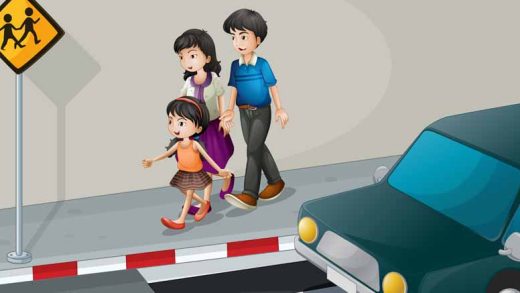What Is Swaddling?
Swaddling is the art of snugly wrapping a baby in a blanket or cloth to restrict their movements gently. The technique involves wrapping the baby’s arms, torso, and sometimes legs to create a secure and cozy cocoon. Swaddling has been practiced across different cultures and generations, reflecting its timeless appeal in providing comfort to newborns.
Why Swaddle A Baby?
Comfort and Security:
- Swaddling creates a secure and cozy environment that mimics the confined space of the womb.
- This sense of security helps babies feel comforted and calm, reducing anxiety and promoting better sleep.
Mimicking the Womb:
- In the womb, babies are surrounded by amniotic fluid, which provides a natural restriction to their movements.
- Swaddling recreates this snug environment, helping babies transition more smoothly to the outside world.
Improved Sleep Patterns:
- Swaddling has been linked to improved sleep patterns, as the feeling of being wrapped can prevent the startle reflex that might wake a baby.
- Babies swaddled for sleep tend to experience longer and more restful sleep periods.
Temperature Regulation:
- Swaddling can help adjust a child’s body temperature and prevent them from turning too cold while sleeping.
- It provides another layer of comfort without the threat of loose bedding.
Reduced Anxiety and Stress:
- The gentle pressure of swaddling can have a calming effect on babies, reducing stress and anxiety.
- It helps create a serene and soothing atmosphere, particularly during times of fussiness.
Promotes Safe Sleep:
- Swaddling promotes safe sleep practices by discouraging babies from rolling onto their stomachs.
- It reduces the chance of SIDS while done correctly.
How To Swaddle A Baby?
Swaddling is a talent that dads and moms, and healthcare experts regularly master with practice. It’s essential to follow safe swaddling practices to ensure the infant’s proper well-being. Here’s a step through step guide on how to swaddle a baby.
Always make sure that the baby’s hips can move and that the swaddle isn’t always too tight, taking into consideration healthy hip development.
Step 1: Gather Your Materials
Before you begin, gather the necessary materials: A lightweight, breathable blanket or swaddle wrap.
Place the blanket on a flat, secure surface.
Step 2: Position the Blanket
Arrange the blanket in a diamond shape, with one corner pointing towards you.
Step 3: Placed the baby on the Blanket
Place the baby on a blanket, with their head just above the top of the blanket.
Step 4: Arms Positioning
Fold the baby’s right arm across their chest, leaving enough room for the baby to bend their hips.
Step 5: Secure the Right Side
Take the right corner of the blanket and wrap it over the baby’s right arm and chest, tucking it securely under the left side.
Step 6: Lower Body Wrap
Fold the bottom corner of the blanket up and over the baby’s legs. Ensure the legs have room to bend at the hips.
Step 7: Left Arm Positioning
Fold the baby’s left arm across their chest, leaving enough room for movement.
Step 8: Secure the Left Side
Take the left corner of the blanket and wrap it over the baby’s left arm and chest, tucking it securely under the right side.
Step 9: Final Adjustments
Check that the swaddle fits well. The baby’s hips should feel free and comfortable, and their legs must be able to twist.
Step 10: Neck and Head Support
Fold down or leave room near the top of the swaddle to provide support for the baby’s neck and head. Be sure not to cover the baby’s face.
When Do You Stop Swaddling A Baby
Determining when to stop swaddling involves observing your baby’s cues and considering developmental milestones. Here are signs that your baby may be ready to transition out of swaddling:
Rolling Over:
- Once a baby starts showing signs of rolling over, it’s crucial to stop swaddling.
- Swaddled babies may have difficulty turning over independently, posing a safety risk.
Increased Mobility:
- If your baby is becoming more active during sleep, attempting to crawl or move around the crib, it may be time to transition.
- Swaddled arms restrict mobility, and babies often signal when they’re ready for more freedom.
Sleeping Patterns:
- If your baby consistently breaks free from the swaddle or resists being swaddled, they may be expressing a preference for more movement during sleep.
- Changes in sleep patterns or increased fussiness may also indicate a readiness to transition.
Age Milestones:
- Around the age of 2 to 4 months, babies start developing stronger neck and arm muscles.
- This increased strength makes swaddling less essential for recreating the womb environment.
Sleep Regression:
- If your baby experiences sleep regression or difficulty settling during sleep, it could be a sign that they need more freedom of movement.
How To Transition Out Of Swaddle (h3)
The transition out of swaddling is a gradual process that requires patience and attentiveness to your baby’s needs. Here are gentle techniques to make the transition smoother:
- One Limb at a Time:
- Start by swaddling with one arm out while keeping the other arm snug.
- Allow a few nights for your baby to adjust before transitioning to both arms out.
- Gradually transition to swaddling with arms free. Use a swaddle with wings or flaps that can be wrapped around the torso while leaving the arms unrestricted.
- This allows your baby to maintain the feeling of security while gaining more freedom.
- Consider using transitional products designed to help babies adjust to sleeping without a full swaddle.
- Swaddle transition products often have built-in wings that gradually reduce the swaddle’s tightness.
- Introduce sleep sacks or wearable blankets as an alternative to swaddling.
- These provide warmth and comfort without restricting the baby’s movements.
- Maintain a consistent bedtime routine to create a sense of familiarity and security for your baby.
- A predictable routine helps signal that it’s time for sleep, even without the snugness of a swaddle.
- Introduce comfort objects like a soft blanket or a stuffed animal to provide reassurance.
- Ensure these objects are safe and follow recommended guidelines for sleep safety.
- If your baby uses a pacifier, offering it during the transition can provide comfort.
- Be mindful of age-appropriate pacifier use and consider discussing it with your pediatrician.
- Allow for a gradual adjustment period as your baby gets used to the new sleep setup.
- Be patient and responsive to their cues, making adjustments as needed.
- Ensure a safe and comfortable sleep environment. Keep the room at a suitable temperature, use a firm mattress, and remove any potential hazards.
- Regularly check for loose bedding or items in the crib that could pose a safety risk.
- Incorporate a comforting touch during the bedtime routine, such as gentle massages or cuddling.
- Physical reassurance helps your baby feel secure during the transition.
Common Challenges And Solutions
Resistance to Change:
- If your baby resists the change, try introducing the new sleep setup gradually.
- Be consistent and patient, offering comfort and reassurance.
Sleep Regression:
- Some babies may experience temporary sleep regression during the transition.
- Stick to the new routine, and if necessary, consult with your pediatrician for guidance.
Trouble Falling Asleep:
- If your baby has trouble falling asleep without the swaddle, consider implementing other soothing techniques, such as gentle rocking or white noise.
Inconsistency in Swaddle Use:
- Ensure consistency in your approach to avoid confusion for your baby.
- If multiple caregivers are involved, communicate and coordinate the transition strategy.
Monitoring for Safety:
- Regularly monitor your baby to ensure they are safe in the new sleep environment.
- Address any safety concerns promptly and adjust the sleep setup accordingly.
At Kangaroo Kids, we understand that knowing when and how to stop swaddling is an important part of your baby’s developmental journey. Recognizing signs of readiness and employing gentle transition techniques help to ensure a smooth and positive transition.









